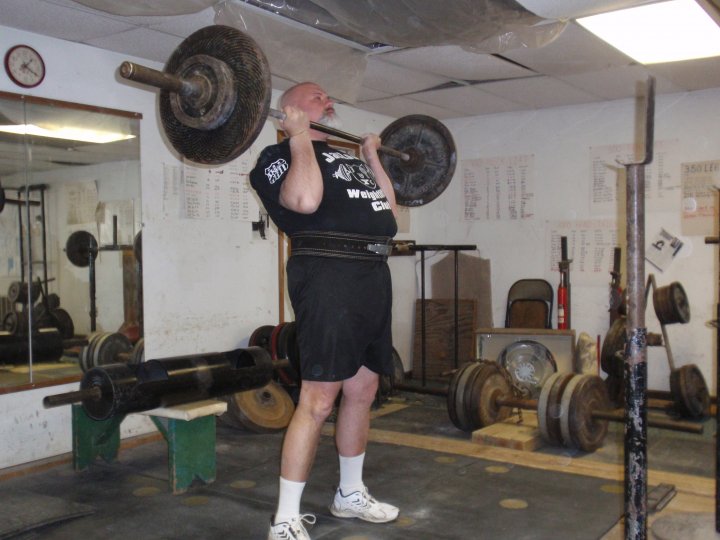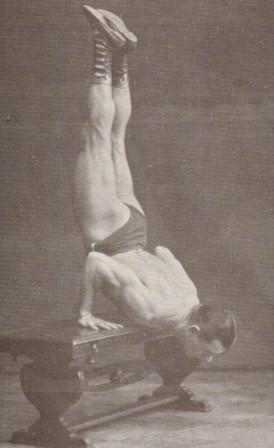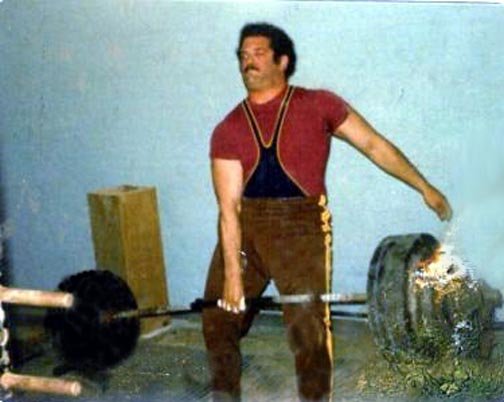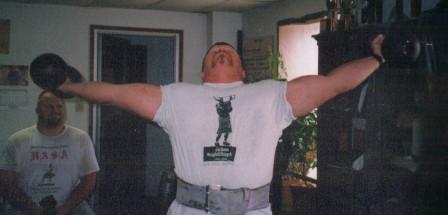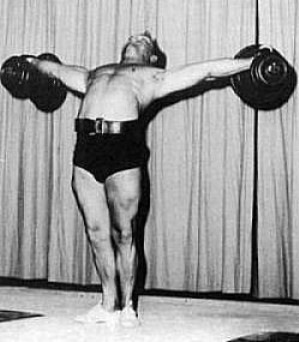The Cheat Curl: Part 2
by Thom Van Vleck
I once saw my Uncle, Wayne Jackson, deadlift 300lbs with a reverse grip, then do a reverse grip hang clean with it, and then press it overhead….still with the reverse grip. When I told him how impressive that was he chuckled and told me that when he started lifting at age 14, that he (and my Uncle Phil) were so naive that they thought you were SUPPOSED to have a reverse grip. When you grow up on the farm before the days of television and magazines were a rare luxury then you just had to make due with what you “thought” was the right was to do something.
Wayne told me that part of the problem was my grandfather Dalton did them both ways as he often switched his grip around for variety. He would lift with all different grips and would supinate his grip about 50% of the time. So they just figured that was the right way. Wayne said they lifted for about a year before they met Wayne Smith who was an experienced lifter who set them straight. Wayne told me Smith’s eyes bugged out the first time he saw Wayne do a clean & press that way. As a result, Wayne was pretty good at it.
Again, because of my granddad, I would throw in some reverse grip cleans early on. Then, I came to the conclusion that these were of no use to me and that no one else I saw in the gym were doing them so they must be bad. There were a lot of things I bowed to conventional wisdom on that I now wish I’d went my own way on. It seems that after 30 years I find myself full circle on a lot of things!
So, many years later, about 6 or 7 years ago to be exact, I was working on Power Cleans. I had read an article about doing some “reverse grip cleans” for the discus and since I was into throwing, I tried some of these. These weren’t “Cheat Curls” in the USAWA rule book, but “Cheating Cheat Curls” where I would cheat curl it up while driving up on my toes and driving the hips hard without regard to keeping my legs perfectly straight. I had been stuck on 290lbs for some time for a single in the power clean. I wanted that magical 300!
After 4 workouts with the reverse grip cleans I switched back to the regular grip. For the next 4 weeks I did 5 sets of 5 and ended with an all time best of 265lbs at 5X5. I then maxed out and hit 300! I was elated. I also notice, as did my training partner at the time, that I was “finishing” with my hips. Using the supinated grip had forced me to exaggerate my hip drive and as a result when I went back to the regular pulls, I was finishing harder and that made all the difference.
So, using the cheat curl or going the extra step and doing a reverse grip clean (Cheating Cheat Curl!!!!) you will learn to finish your pull. It can make all the difference!
